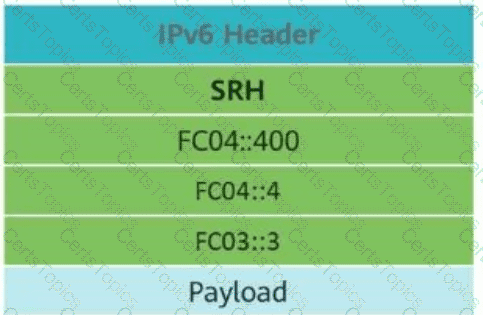YANG is a data modeling language for the definition of data sent over network management protocols such as NETCONF. Which of the following are basic YANG data models? (Select all that Apply)
Which of the following functions can be provided by iMaster NCE-Campus when it functions as a relay agent for authentication?
An Ethernet Segment Identifier (ESI) is 10 bytes long and unique on the entire network.
This figure shows anSRv6 (Segment Routing over IPv6)packet. If theDestination Addressfield in the IPv6 basic header isFC04::4, the value of theSL (Segment Left)field in the SRv6 header should be____.(Enter only digits.)
